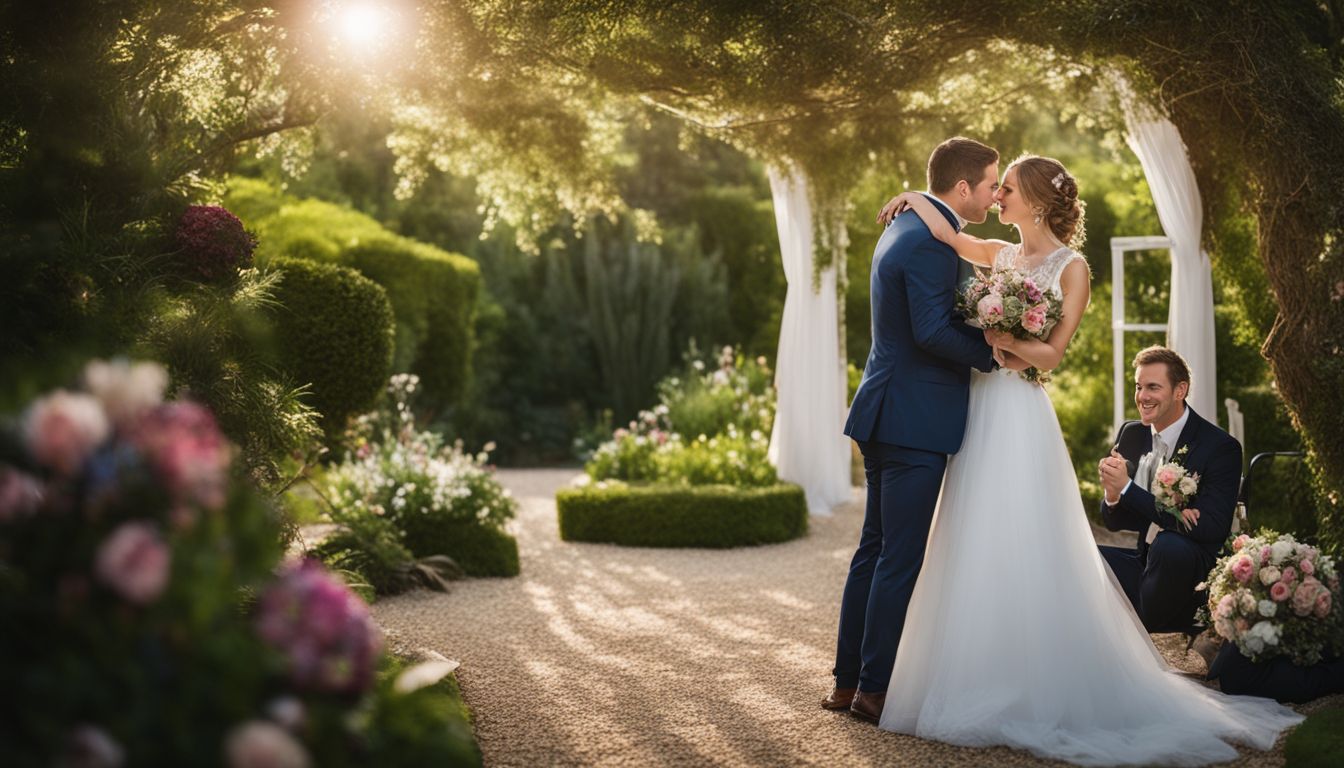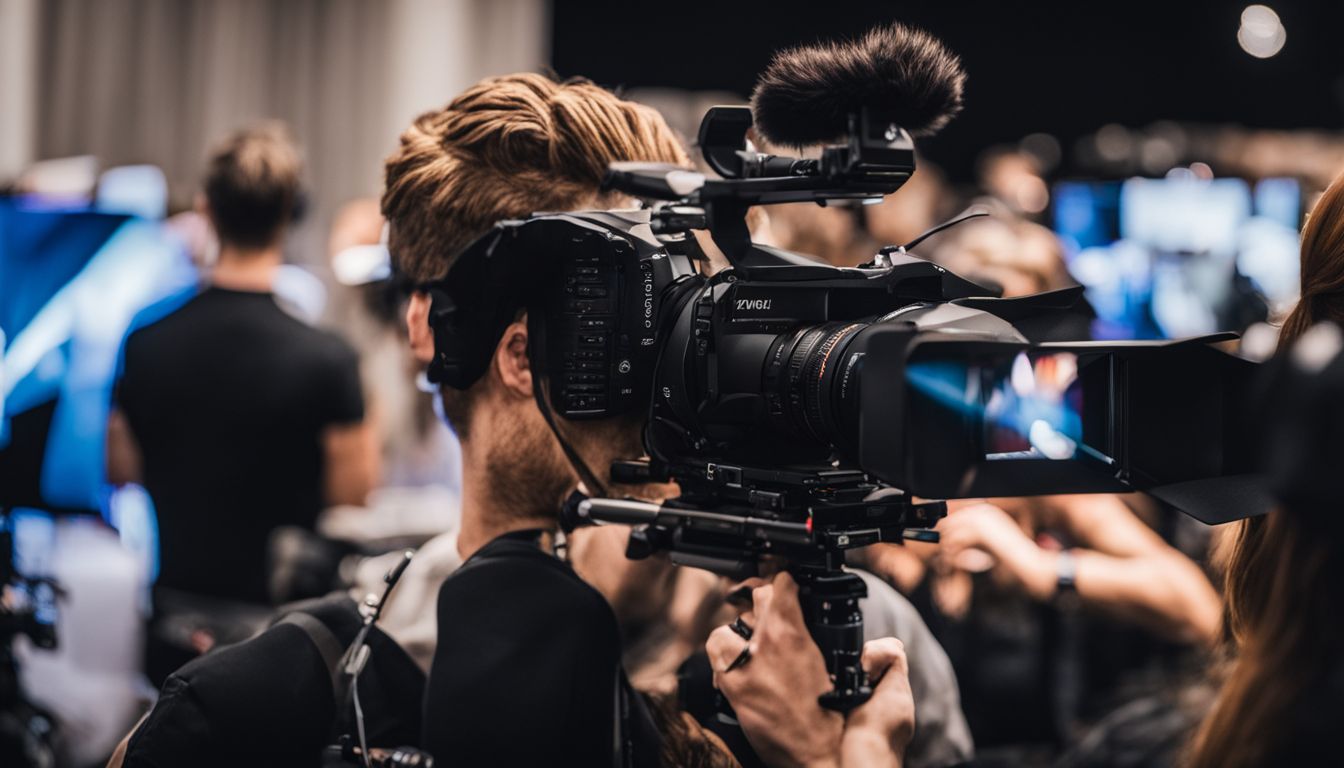Many people find distinguishing between photography and videography a tricky task. Despite their similarities, each offers a unique way of capturing life’s moments – with photography freezing time in a single frame and videography stitching seconds together to tell a story.
This article sheds light on the key differences that define these two visual arts, ensuring you can confidently identify each craft. Dive in to discover the details through our lens..
Key Takeaways
- Photography freezes a moment in one image; videography tells a story with moving images.
- A photographer often works alone while videographers usually work with a team including directors and sound experts.
- Shooting videos is more complex than taking photos, needing careful planning and editing to weave clips into a story.
- Photographers focus on light, angles, and composition in stills; videographers also consider sound and continuous motion for their films.
- Planning is vital for both photography and videography to ensure the final work effectively tells the intended story or message.
Understanding Photography

Photography is about taking still pictures using cameras. It lets us freeze moments in a single image that lasts forever. Cameras can be big, like the ones professional photographers use, or small, like the camera on your smartphone.
When someone takes a photo, they decide what to put in it. This includes where people stand and how light shines on them.
A freelance photographer needs to learn new ways to take great photos all the time. They might work at weddings or take shots of sports fast-moving action! Their job also helps brands show off what they are all about through pictures – this is called branding.
Good photography makes things look better and helps people trust a brand more.
Taking good photos isn’t easy; it’s an art just like painting or drawing. Each picture tells its own story from the person who snaps it – their point of view “through the lens”. The best photographs make us feel something when we look at them, whether that’s happy, sad or amazed by beauty!
Understanding Videography

Videography captures life in motion, telling stories through moving images. Videographers use cameras to record events as they happen, from small parties to big sports games. They also create videos for brands, helping them share their story and connect with people.
This kind of video work can boost a brand’s identity and make it more well-known.
Editing is key in videography; it shapes the final story. A good videographer knows how to join clips, add music, and put effects that catch the eye. Their work is not just about filming – it’s about making a full tale that people will want to watch over and over.
Videos are powerful for influencers too. They help these stars show their life or skills online which can bring them closer to their fans.
Major Differences Between Photography and Videography
Team size, workload, technical requirements, creative output, and planning importance all play a significant role in differentiating photography from videography. Interested to learn more about the distinctions between the two? Keep reading for an in-depth look!
Team Size
In photography, one person can often do all the work. This might be just the photographer taking pictures. But in videography, a group of people usually works together to make a video.
This team has different members like a director who leads, someone to handle the camera, and another person for sound.
The number of people needed can change based on what kind of project it is. If it’s a small video job, maybe only a few are needed. On big shoots for commercials or movies, many more people join to help out.
Each person has their own important role so that everything looks good and tells the story right.
Workload
Taking pictures is different from making videos. Photos capture one moment, while videos capture many moments to tell a story. This means making videos takes more time and work than taking photos.
Videographers often have a lot to do after shooting too, like video editing which can take hours.
Photographers might click lots of pictures at an event. But videographers must make sure they catch all the action because they can’t miss any part of what’s happening—it all needs to connect in the final video.
They think about how each shot will fit into their story. So their workload can be very big, as every second on film counts!
Technical Requirements
Photographers and videographers need different gear to do their jobs well. For capturing still images, a photographer uses a high-quality camera with lenses that can be changed. They must know how light works and what settings are best for their camera.
Videography calls for its own set of tools. A video camera that captures both sound and picture is key. People shooting videos also have to understand things like frame rates and resolution.
Editing pictures or footage after it’s taken is part of the job too. Both photographers and videographers use software on computers to make their work look better, but they don’t use the same programs or methods.
As digital imaging gets more popular, knowing how to edit is becoming even more important for creating top-notch work whether it’s for social media, weddings, or brand awareness campaigns.
Creative Output
Photos capture a single moment. Videos tell a story with many moments. A photographer uses light, shadows and colours to make powerful images. They think about how objects look from different sides.
Sometimes they wait hours for the perfect light to take an amazing photo.
Videographers also care about light but must also think about sound and movement. They record events as they happen. A wedding videographer captures laughter, music and the first dance in motion to share the day’s story.
Both photographers and videographers use their skills to create strong visual communication that can touch hearts or help brands stand out.
Photography lets us freeze time with one click of a camera. Videography brings memories back to life over and over again through moving pictures and sounds.
Planning Importance
Planning plays a key role in both photography and videography. It’s like making a roadmap for creating pictures or videos that tell a story. You think about what your camera needs to capture, the light, and where everyone should stand.
This helps you to share your message or show off something special.
Good planning can mean less stress on the day of shooting. For photographers and videographers, knowing what shots they need means they work better as a team. They make sure their work fits together well and looks great.
Planning also includes getting permission to use images or videos of people, which is very important.
Having everything planned out makes it easier to do a good job quickly and with high quality. It shows that you are serious about your work and helps build trust with those who see it.
Whether you’re capturing memories at weddings or working on adverts for brands, planning can take your photos and videos from good to amazing!
The Role of a Wedding Videographer in Capturing Your Special Moments
Wedding videographers have a crucial role in immortalising the special moments of your big day. Unlike photography, videography captures moving visuals, including heartfelt vows, speeches, and the joyous dance floor celebrations.
Their skill lies in weaving these moments together to tell your unique love story through visual storytelling. Working alongside photographers, they ensure that no significant moment is missed during the wedding day.
With their expertise in capturing movement and emotions, wedding videographers add depth and richness to your wedding memories.
Skilled wedding videographers do not just record events; they curate an emotional narrative that brings your special day to life whenever you revisit it. Their work goes beyond documentation; it’s about capturing the essence of every cherished moment, ensuring that those precious memories stay vivid for years to come while encapsulating the emotions felt on such a joyous occasion.
Conclusion
In conclusion, photography and videography are distinct forms of visual storytelling. While photography captures single moments in still images, videography documents a sequence of moving pictures.
The differences extend to team size, workload, technical requirements, creative output, and planning importance. Understanding these disparities is crucial for anyone seeking to communicate their story through visuals or considering hiring visual artists for their projects.
To truly understand the role of a wedding videographer in immortalising your special moments, click here to explore more.
FAQs
1. What makes professional photography different from videography?
Professional photography captures single moments in time, creating still images that can tell a story or promote brand identity through compositions and touch points. Videography, however, involves recording moving images to create narratives and often adds another layer to storytelling.
2. Is it only photographers who care about brand recognition?
Not at all – both photographers and videographers work hard to build brand recognition. Photographers might focus on capturing the essence of a brand in a single shot, while videographers aim to connect with the target audience by weaving stories over time.
3. Can I just use my smartphone camera for sports photography?
While many smartphones have great cameras these days, professional sports photography usually requires more advanced equipment to capture fast action with clarity and precision that helps maintain credibility of your shots.
4. How does touch points relate back to front-end web development in terms of visuals?
Touch points are crucial elements in front-end web development; they ensure visuals like photos or videos look good on websites and make an impact on viewers, much like CSS enhances user experience by styling content attractively.
5. Will knowing about cinematographer techniques improve my video work?
Absolutely! Understanding techniques used by cinematographers can seriously raise the quality of your videos – it’s not just about recording what’s in front of you but making sure each scene aligns with the desired emotion or message for maximum effect.






